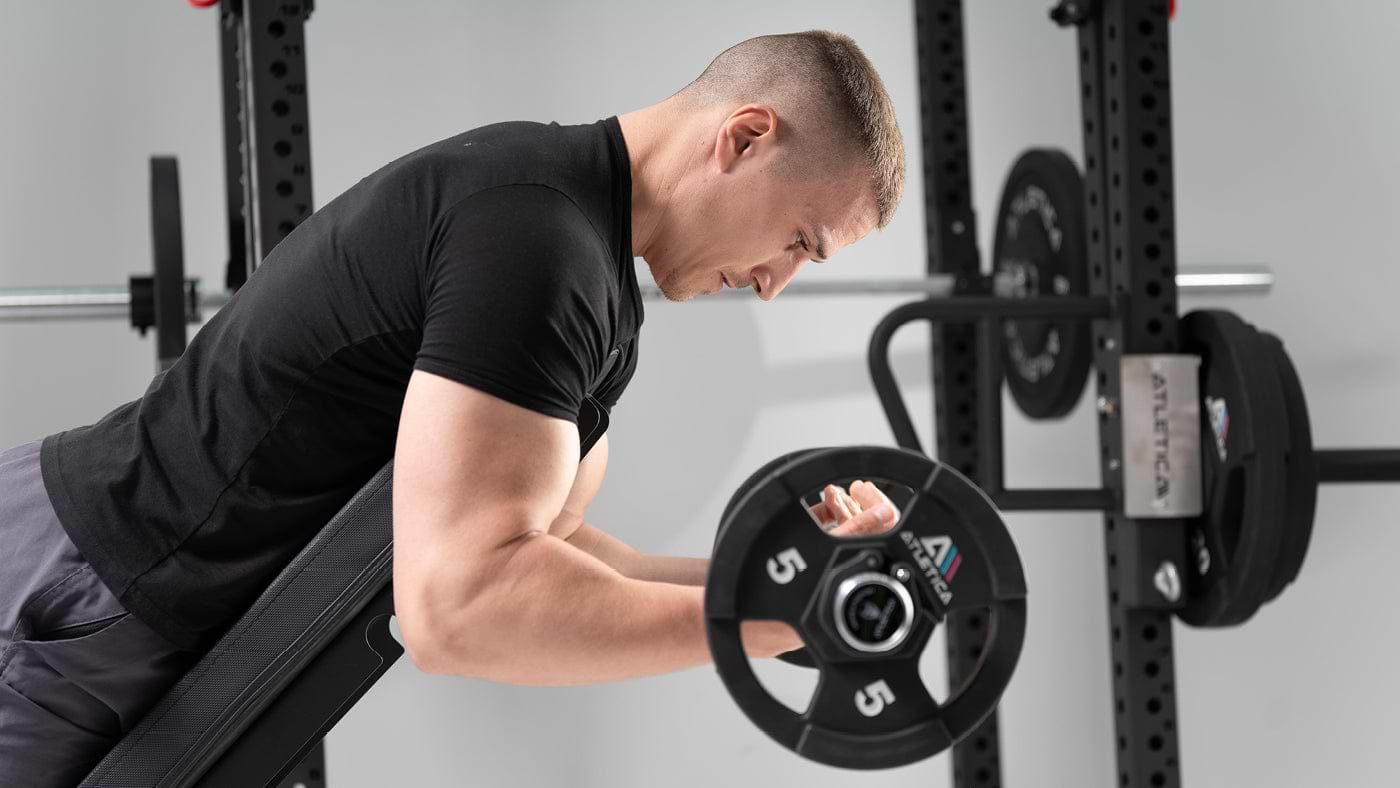Strong legs aren't just a visual statement, they're also essential for functional fitness, athletic performance, and a balanced muscle ratio. A well-thought-out leg training plan will help you build muscle mass, develop strength, and prevent injuries. In this comprehensive guide, we'll show you how to structure an effective leg workout, which exercises really help, and how to take your training to the next level with the right equipment from Atletica.

1. Why a targeted leg training plan is important
Many fitness enthusiasts neglect leg training – with disastrous consequences. An unbalanced workout can lead to problems not only in appearance but also functionally.
Benefits of a structured leg training plan:
- Muscle building in thighs, calves and buttocks
- Improved stability and posture
- More calorie consumption through large muscle groups
- Better performance in sports such as running, cycling or skiing
- Prevention of back pain and knee problems
Good leg training pays off in the long run – for recreational athletes as well as for professional athletes.
2. Understanding the anatomy of the leg muscle
To train effectively, you should know which muscles you are targeting:
- Quadriceps (front thigh): for extension in the knee joint
- Ischiocrural muscles (leg flexors): for flexion in the knee joint
- Gluteus Maximus (gluteal muscle): strongest muscle in the body
- Adductors & Abductors: for lateral movement and stability
- Calf muscles (gastrocnemius & soleus): for jumping and walking movements
A balanced leg training plan takes all of these muscle groups into account to avoid imbalances and promote a harmonious muscle structure.
3. The best exercises for your leg training
An effective leg workout combines basic exercises with isolation exercises:
a) Basic exercises (for muscle mass and strength)
- Squats: with barbell, dumbbell or body weight
- Leg press: ideal for controlled training with high load
- Lunges: forward , backward or sideways
- Deadlifts with straight legs: for hamstrings & glutes
- Bulgarian Split Squats: for balance, strength and glute activation

b) Isolation exercises (for targeted muscle growth)
- Leg extensions: for quadriceps
- Leg curls lying or sitting: for hamstrings
- Calf raises while standing or sitting: for defined lower legs
- Hip Thrusts: Focus on Gluteus Maximus
- Step-ups: for strength, coordination and functional training
4. Training plan for beginners & advanced
Beginners (2× per week)
Day 1:
- Squats (3×12)
- Leg press (3×12)
- Calf raises (3×15)
Day 2:
- Lunges (3×10 per leg)
- Leg extension (3×12)
- Leg curls (3×12)
Advanced (3 times per week)
Day 1 – Focus on Strength:
- Squats (5×5)
- Deadlift (4×6)
- Calf raises (4×15)

Day 2 – Focus Volume:
- Lunges with dumbbells (4×10)
- Leg press (4×12)
- Hip Thrusts (4 × 12)
Day 3 – Focus on stability & mobility :
- Bulgarian Split Squats (3×10)
- Step-ups (3 × 12)
- Resistance Band Side Steps (3 × 15)
Through targeted variation, the training remains varied and continually challenges the muscles in new ways.
5. The best equipment from Atletica for your leg training
An effective leg training plan benefits from high-quality equipment. At Atletica you'll find:
- Leg press : for maximum resistance and targeted quadriceps work
- Squat Rack & Barbell Set : for free squats and deadlifts
- Dumbbells & Kettlebells : ideal for lunges, step-ups and split squats
- Resistance bands : perfect for mobility exercises, glute activation and side steps
- Balance Pads & Plyo Boxes : for functional training, jumping power & balance
- Fascia rolls : for regeneration after leg training

All devices are durable, space-saving and perfect for your home gym or professional equipment.
6. Nutrition & Regeneration – two success factors
A strong muscle grows not only during training, but especially during the recovery phase. Without regeneration, there is no progress.
Nutrition:
- Sufficient protein (1.6–2.2 g per kg body weight)
- Carbohydrates for training energy
- Healthy fats for hormone regulation
- Plenty of water (at least 2–3 liters daily)
Regeneration:
- 48 hours rest between intensive leg workouts
- Active relaxation through walks or leisurely cycling
- 7–9 hours of sleep per night
- Fascia massage and stretching
7. Stretching and mobility – the underestimated components
One-sided strength training without stretching can lead to shortened muscles and limited mobility. Plan regularly :
- Dynamic warm-up before training (e.g. B. Lunges with upper body rotation)
- Static stretching after training (v. a. hamstrings, calves, hip flexors)
- Mobility exercises with resistance bands

This improves your technique, prevents injuries and increases your performance.
8. Motivation: How to stay on track
Regular leg training is demanding – mentally and physically . To help you stick with it in the long run:
- Set realistic goals (e.g. B. +10 kg in squats in 3 months)
- Track your progress (training journal or app)
- Reward yourself for milestones (e.g. B. new equipment from Atletica)
- Train with a partner or coach
And don’t forget: Leg Day is not an optional training day – it’s the most important day of the week!
Conclusion: Your path to strong legs
A targeted leg training plan is the key to functional strength, improved performance, and a strong, athletic physique . With the right combination of compound exercises, isolation exercises, the appropriate training frequency, and professional equipment from Atletica, you can get the most out of your leg day. Whether you're a beginner or advanced, if you train consistently, you'll see results.




































































































